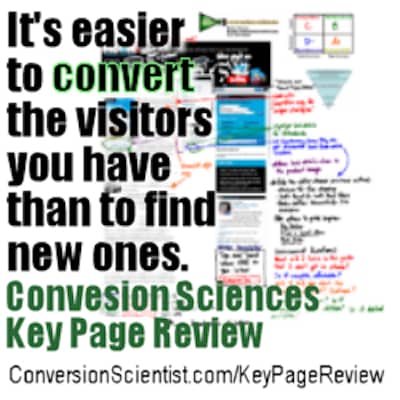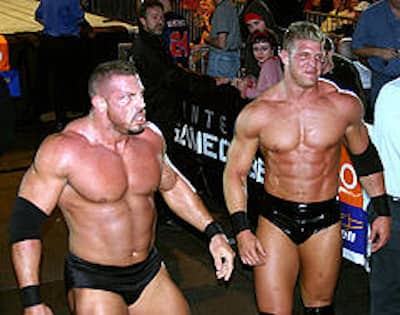This is the last in this series of core conversion marketing strategies: The Site as a Service Pattern. Get visitors into a trial from your home page, use email notifications to keep them interested and engaged, and you will get more and more customers from your online marketing efforts.
You can do almost anything on the Internet now. You can monitor your finances, socialize, organize ideas,manage your job search, broadcast your travels, and recruit college students.
The core conversion marketing pattern that these sites should adopt is the “Site as a Service Pattern.” This is the fifth and last of the core conversion strategies in this series.
Explore other site patterns in The Five Core Patterns Of Conversion Marketing and The E-commerce Pattern.
These sites are delivering a service that is consumed online. Typically, the primary conversion is “join” or “subscribe.” However, many of these sites’ business models rely on return visits, so “login” is also an important conversion beacon even though it appeals to existing customers.
You don’t have to have a savvy Web 2.0 application to adopt the Site as a Service pattern. In fact, if more sites using “E-commerce” or “Considered Purchase” patterns would see their sites as an online service, they might find themselves being more successful.
In general, you should select the site-as-a-service pattern if:
- You are providing a service that is consumed online
- Your prospects can make a decision to buy relatively quickly
- You charge a fee to use the application, or rely on advertiser revenues
How is this different pattern from the Portal Pattern discussed in a previous column? The portal pattern is focused on content-oriented businesses while the site-as-a-service pattern assumes an application-driven service. However, if you believe you should build a portal pattern website, look closely at site-as-a-service. You might find these strategies more effective.
My goal with this post is to explore three strategies that are conversion deal-breakers for sites that deliver an online service. Get these strategies right, and you should be able to optimize your way to higher conversion rates. Get any of these wrong, and you will find yourself struggling to improve.
The trial for The Site as a Service
Online applications have an amazing advantage over the other sites I’ve discussed: you can try the product right there on your computer. Therefore, I consider a trial strategy the first key conversion strategy.
A trial strategy has these primary advantages:
- It requires minimal commitment from the visitor
- It let’s you start the sales conversation via email
- It lets the visitor experience the product first hand
How much should you charge for the trial?
Beware the free trial. By offering a free trial, you may be delaying the purchase for those who would buy on the spot. Good conversion copy will remove risk from the purchase decision, so a free trial is often a sign that you don’t know how to communicate the value of your service.
Free trials deliver less-qualified prospects, and your conversion from trier to buyer will probably be low. Consider a free trial only if you rely on word-of-mouth as a core marketing strategy and you have built sharing features into your sales process.
Almost any nominal fee will increase the likelihood that a visitor will use the service during the trial. Furthermore, the conversion from trier to buyer becomes much easier, since you don’t have to ask them for a credit card at this critical juncture.
Even if you offer a free trial, evidence suggests that taking the credit card at the start of the trial will result in more paying customers, even though it will significantly reduce the number of triers you have.
The extreme version of this strategy is the “freemium” model, in which a portion of the service is given away for free, and more advanced features require payment. This strategy begs the question, “If your service is free, how valuable can it really be?”
For more on the psychology of “free,” please read Dan Ariely’s book and blog, Predictably Irrational.
How long should the trial last?
This is a question for which I don’t have any research to point to. I would like to hear your findings in the comments.
From a business perspective, the shorter the trial, the sooner the business can begin charging full fare for the service. Length of trial can be made irrelevant if you see the trial period as a time for educating, engaging and cajoling trial customers to use the application.
For example, an aggressive (daily) email auto-responder series delivering “how to” instructions and “did you know” tips will on its own move triers to buyers regardless of the trial period. Get this right, and you only need your trial to last long enough to support your email auto-responder schedule.
The home page for The Site as a Service
If a trial is your first key conversion strategy, then your home page is your trial landing page.
The home page must convert visitors to buyers or triers. While it is important to communicate the primary value proposition and key benefits, it is the application itself that ultimately communicates its value.
Many sites-as-a-service provide services that we already have solutions for. The value proposition is often that you can do something better, cheaper or easier.
I recommend making the home page the first step in using the application. The most extreme example of this is the Google home page. For years, it’s basically been one blank, two buttons; type, click, instant gratification.
Ask for the first piece of information in the registration process on the home page. Before you ask them to register for a trial, they’ve begun using the application, and have already had a win or two in the process. You can be creative with this step. A dog kennel might offer a simple form on the home page asking, “What is your dog’s name,” and that starts the process of scheduling a boarding.
The home page has to deliver a well thought out (and tested) value proposition and links to pages that discuss features and benefits for those that need more information. However, for those that are looking to solve an immediate problem, let them dive in.
Notification email
I have a theory for why Facebook beat Friendster in the online social network market. I think it was the “Poke” feature. In Facebook’s eyes, “Poke” had one purpose: to send an email to a user’s friend, reminding them to come back to the site. This email—and the many others that Facebook sends—came from a trusted source, and reminded users to come back to the site.
What excuses can you come up with to send an email to your triers and buyers?
It starts with the confirmation email, sent when a visitor registers for a trial or purchases the service. Was yours written by a developer? If so, it probably states something like “click here to confirm.” More socially capable engineers may throw in a “welcome” at the top.
The confirmation email is a chance to remind the user why they signed up, to educate them on how the application will make their life better, and to invite them back to the site.
Almost any excuse will do. I’ve subscribed to hundreds of online services and Web 2.0 applications. I rely on them to optimize my life. I’ve tried hundreds and pay for a handful.
You would think that I get a constant barrage of these notification emails, right? Wrong. The ones that I pay for did a good job of keeping me on the hook via email. Those that I just won’t use, I opt-out of.
Don’t make the mistake of thinking that you’re a spammer if you send email to your buyers and triers. Here are some examples of trier emails from my personal experience:
- Mint.com sends an email every 30 days telling me they miss me if I don’t login. I use their bill alerts, so I like the monthly reminder to go back and make sure nothing has changed with my banks.
- PageOnce.com did an amazing thing for me: they told me when the minutes on my phone plan were out. That email alone prompted me to renegotiate my mobile phone plan, and has made me spend time with this personal online assistant service.
- VolunteerSpot.com missed an opportunity by not sending me an email when my volunteers signed up for a job on the site. The CEO has assured me that this will be corrected, but I don’t use the application today as a result.
Slideshare.net sent me this:
We’ve noticed that your slideshow on SlideShare has been getting a LOT of views in the last 24 hours. Great job … you must be doing something right. ;-)
Why don’t you tweet or blog this? Use the hashtag #bestofslideshare so we can track the conversation.
I don’t know that any of my presentations had been particularly active, but I did tweet one of them.
My point is this: when someone has signed up to try or buy your application you are an email marketer—not a spammer. If you send them email you are going to struggle if you don’t aggressively work to get them back to your site. Always give them the option to opt-out.
If you’ve been following this series, you may be wondering why I didn’t choose the purchase process as a key conversion strategy for this pattern. I was pretty vociferous about not losing a customer with a bad shopping cart experience.
The truth is I feel strongly about the effectiveness of the strategies I’ve discussed, that I believe a prospect will get through the worst registration process if you get them right. Get visitors into a trial from your home page, use email notifications to keep them interested and engaged, and you will get more and more customers from your online marketing efforts.
Finally, I hope one day that all websites will see themselves as a service, an application. One day, the idea of a web “page” will be quaint. Each site we come to should take us by the hand and help us solve whatever problem is on our plate, even if the only thing we’re looking for is information.
Is your website a service? How would it change if you decided to put up an application instead of a bunch of pages? Please put your thoughts and examples in the comments.
We’re going to make people love your business through your Web site at Conversion Sciences. There is plenty you can do to increase online sales conversions, and we share it all. Learn what that you can do to convert more of your visitors into leads and sales.
Originally published in Search Engine Land.













